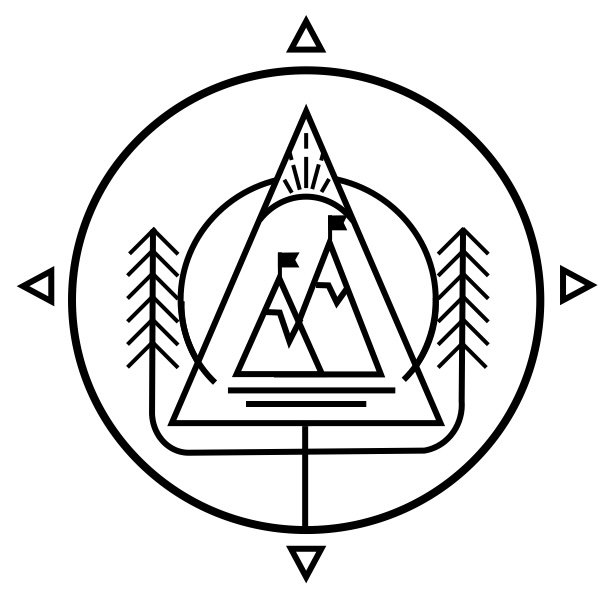
PREPARATION
Expedition Preparation
Climbing Mt. Kilimanjaro is a remarkable adventure—and a serious undertaking. As Africa’s tallest mountain, Kilimanjaro stands at 19,341 feet (5,895 meters) above sea level. Unlike technical mountaineering, Kilimanjaro is a non-technical trek, meaning you don’t need ropes or climbing equipment. However, don’t let that fool you—the mountain demands physical stamina, mental resilience, and thoughtful preparation.
Physical Demands
Over the course of 6–8 days, you’ll hike through five distinct ecological zones—from tropical rainforest to alpine desert to arctic summit. Most days involve 4–7 hours of trekking, with the summit push requiring 10–14 hours of continuous effort, often in cold and windy conditions. While the pace is slow and steady, the cumulative effects of long days, cold nights, and high altitude require strong cardiovascular health and endurance.
Altitude & Acclimatization
The greatest challenge most climbers face is altitude. As you ascend, the air gets thinner—there’s less oxygen available with every breath. Symptoms like headaches, nausea, and fatigue are common, and proper acclimatization is key. You’ll need to pace yourself, stay hydrated, and follow your guide’s instructions carefully. Many climbers also consult a physician about taking altitude medication (like Diamox) in advance.
Mental Preparation
Beyond the physical demands, Kilimanjaro is a mental challenge. You may feel discomfort from cold, fatigue, or lack of sleep. There may be moments of doubt or discouragement—especially on summit night. But these moments can also be deeply formative. Many climbers describe the experience as life-changing—not just for the views from the top, but for the inner journey it sparked.
Training & Fitness
You don’t need to be an elite athlete, but training is essential. Build a routine that includes regular hiking with a weighted backpack, strength training, and aerobic activity. It’s also wise to practice with your gear—break in your boots, test your layers, and get used to carrying your daypack.
Gear & Packing
Proper gear is essential for comfort and safety. You’ll need layered clothing to adjust to a wide range of temperatures, quality hiking boots, a warm sleeping bag, waterproof outerwear, and essential accessories like gloves, hats, headlamps, and trekking poles. Porters will carry your main duffel bag, but you’ll carry a daypack with water, snacks, and layers.
Community & Support
You won’t climb alone. You’ll be part of a team supported by experienced guides, porters, and fellow trekkers. Whether you’re encouraging one another on the trail, sharing stories around camp, or standing together at the summit, the shared journey is part of what makes Kilimanjaro unforgettable.
This is a great video about a woman’s experience on Mt. Kilimanjaro. It has some great advice!
Great advice and an especially great packing list!
Communications
December 1, 2025 - Welcome and Orientation Dates (email)
January 1, 2026 - Training (email)
February 1, 2026 - Readings and other website resources (email)
March 1 , 2026- Kilimanjaro Expedition Orientation, 3 PM CST (Online)
April 1, 2026 - Orientation update, training check-in, itinerary updates (email)
May 1, 2026 - Packing resources (email)
June 1, - Packing check-in, itinerary updates (email)
June 23 - Final Logistics/Q&A (Online)
June 29 - Departure Day!
All expeditions require serious preparation to be ready for the challenges ahead. In addition to your expedition admission notification, Mark and Brad will be in communication with you with a host of information on the following dates:
In addition to these planned communications and online meetings, we’ve provided some additional resources for you to help you with your training, packing, and other logistical considerations that will help you prepare.
Training
Training is a critical part of preparing for your Kilimanjaro climb. Your level of physical conditioning will greatly impact your experience on the mountain. Many participants have never hiked for so many consecutive days—especially at high altitudes—which is why we strongly encourage you to aim for the best physical shape of your life.
Climbing Africa’s highest peak is no small feat. While the daily trekking pace is slow and most days conclude by mid-afternoon, the cumulative effects of exertion, disrupted sleep, reduced appetite, dehydration, unpredictable weather, and high altitude can be challenging. Your endurance, especially during the summit push, will be tested.
We recommend completing a minimum of 8 to 12 weeks of dedicated training before your departure. The exact duration will depend on your current fitness level and hiking experience. While other forms of exercise (like running or weightlifting) can be helpful, hiking should be the core of your training plan. Nothing prepares you better for Kilimanjaro than spending time on the trail with a weighted daypack. We’ve provided a dedicated 6 month training plan to help you make the most of your time before we arrive in Tanzania.
-
GOAL: Build aerobic fitness, stark hiking routine. Set a routine for training. Focus on discipline.
Weekly Plan:
3x/week cardio (30–45 min jog, swim, bike)
1x/week strength training (legs, core, back)
1x/week local hike or long walk (4–6 miles)
Focus:
Break in hiking boots
Build general endurance
Light stretching/yoga
-
GOAL: Increase hike length and add weight. Build your foundation of endurance and strength. Keep workouts challenging and fun.
Weekly Plan:
2x/week cardio (45–60 min)
2x/week strength training (add incline walking, stair work)
1–2x/week hikes (6–10 miles, with 10–15 lb daypack)
Focus
Simulate trail conditions
Use trekking poles on hikes
Hydration habits
-
Goal: Simulate mountain days
Weekly Plan:
1x long hike (10+ miles, full gear)
1x stair climbing or hill repeats
1x cross-training/cardio
1x strength session
Day 5: Open day to do any exercise you like
Focus:
Altitude simulation (if available)
Back-to-back hike weekends (2 days in a row)
Nutrition and hydration during hikes
-
Goal: Rest, stay loose, finalize gear
Light cardio (3x/week)
1x short hike with gear
1–2 yoga/stretching days
Focus:
Don’t try new workouts
Prioritize sleep, hydration
Mental preparation
Packing
Packing for Kilimanjaro is all about layering, functionality, and simplicity. The weather changes dramatically as you ascend through five climate zones—from warm rainforest to freezing arctic summit—so having the right gear and clothing will make a big difference in your comfort and success. We provide a packing list and a handy checklist below to make sure everyone is on the right track.
Two Bags: What to Expect
Duffel Bag (main luggage)
This bag should be between 90 and 130L in volume and will carried by porters and should weigh no more than 15 kg (33 lbs). Pack everything you won’t need while hiking during the day.Daypack (you carry this)
This should be between 38-45L in volume and lightweight and comfortable. It should carry your water, snacks, rain gear, camera, and extra layers needed throughout the day.
Clothing Strategy: Think in Layers
You’ll need a range of layers to adapt to varying temperatures and conditions:
Base Layers: Moisture-wicking tops and thermal underwear
Mid Layers: Fleece or down jackets, softshell pants
Outer Layers: Waterproof, windproof jacket and pants
Insulation: A warm down or synthetic jacket (for summit night)
Accessories: Warm hat, sunhat, gloves (light and insulated), neck gaiter or buff
Footwear: Broken-in hiking boots, comfortable camp shoes, warm socks




